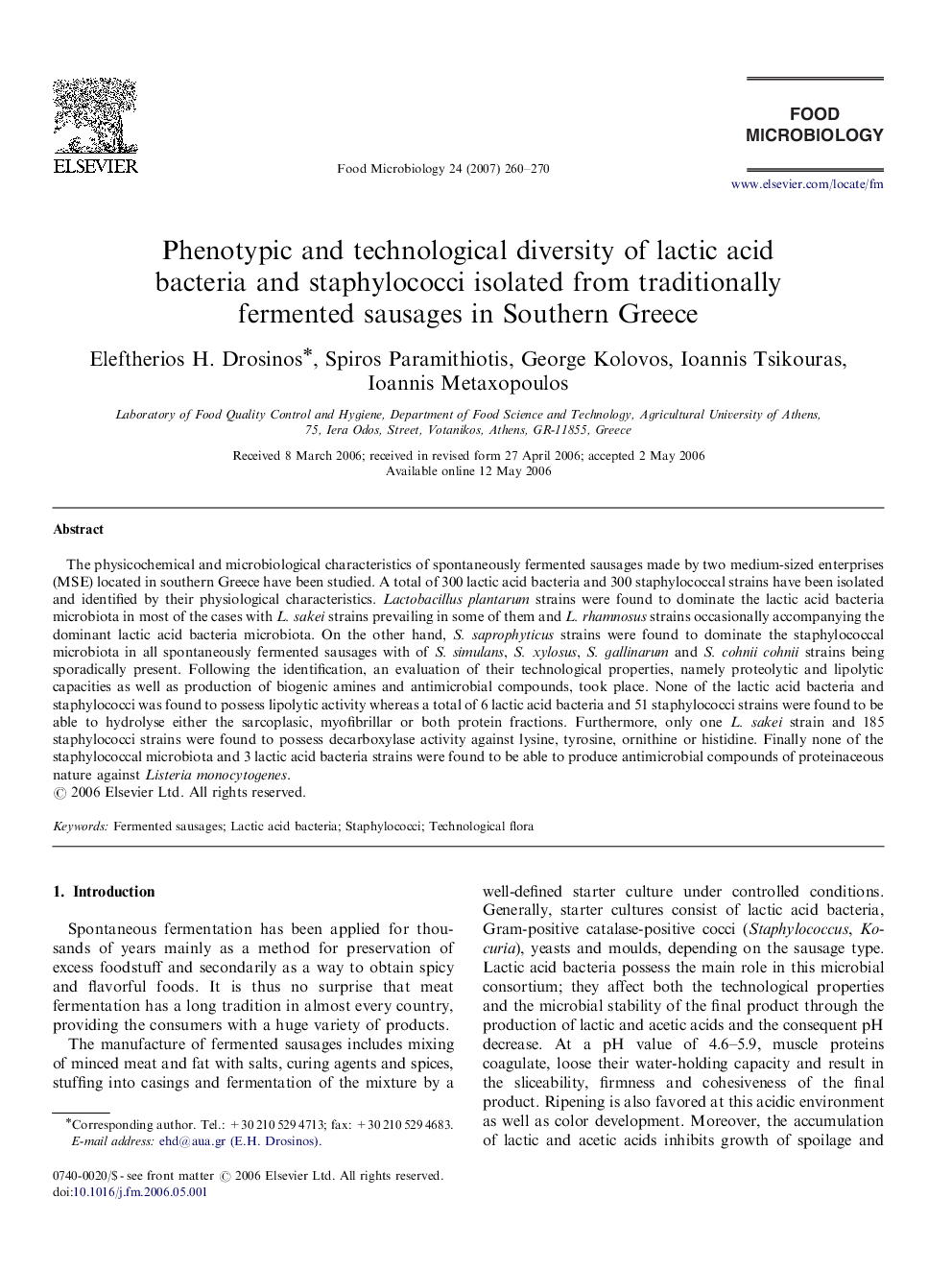| Article ID | Journal | Published Year | Pages | File Type |
|---|---|---|---|---|
| 4363864 | Food Microbiology | 2007 | 11 Pages |
The physicochemical and microbiological characteristics of spontaneously fermented sausages made by two medium-sized enterprises (MSE) located in southern Greece have been studied. A total of 300 lactic acid bacteria and 300 staphylococcal strains have been isolated and identified by their physiological characteristics. Lactobacillus plantarum strains were found to dominate the lactic acid bacteria microbiota in most of the cases with L. sakei strains prevailing in some of them and L. rhamnosus strains occasionally accompanying the dominant lactic acid bacteria microbiota. On the other hand, S. saprophyticus strains were found to dominate the staphylococcal microbiota in all spontaneously fermented sausages with of S. simulans, S. xylosus, S. gallinarum and S. cohnii cohnii strains being sporadically present. Following the identification, an evaluation of their technological properties, namely proteolytic and lipolytic capacities as well as production of biogenic amines and antimicrobial compounds, took place. None of the lactic acid bacteria and staphylococci was found to possess lipolytic activity whereas a total of 6 lactic acid bacteria and 51 staphylococci strains were found to be able to hydrolyse either the sarcoplasic, myofibrillar or both protein fractions. Furthermore, only one L. sakei strain and 185 staphylococci strains were found to possess decarboxylase activity against lysine, tyrosine, ornithine or histidine. Finally none of the staphylococcal microbiota and 3 lactic acid bacteria strains were found to be able to produce antimicrobial compounds of proteinaceous nature against Listeria monocytogenes.
